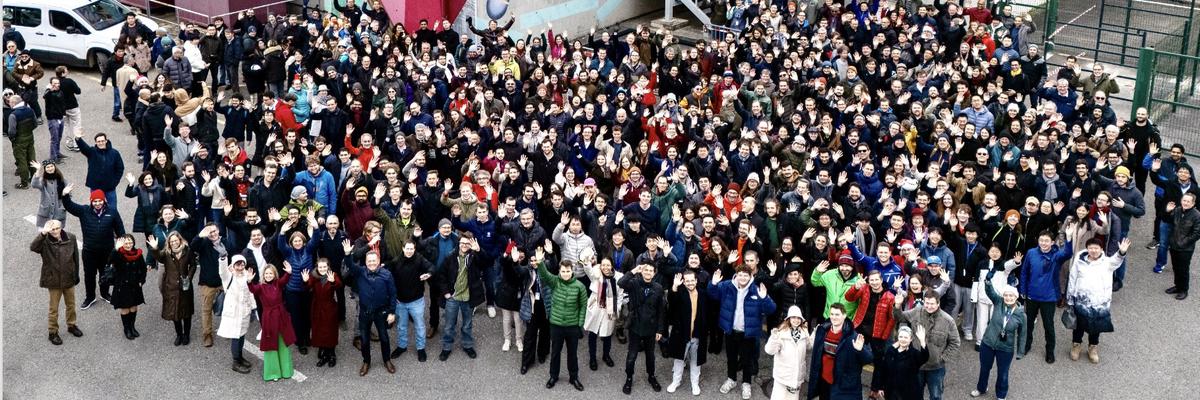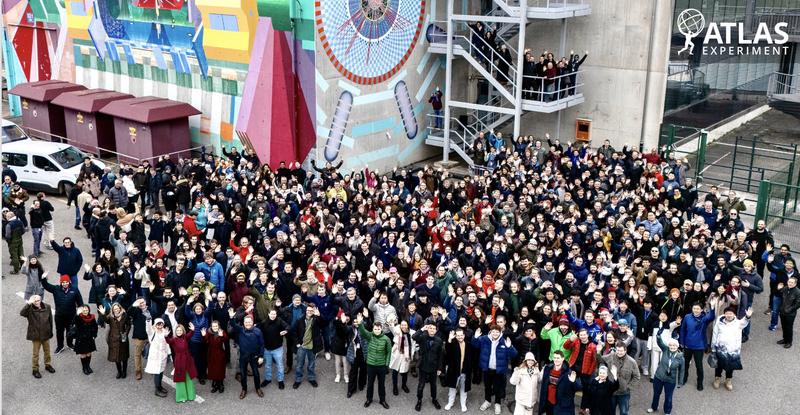Highlight
IFAE researchers among winners of prestigious Breakthrough Prize in Fundamental Physics
April 7, 2025

ATLAS is one of the largest and most complex scientific instruments ever built. As a general-purpose particle detector measuring over 40 metres in length and around 25 metres in height, it was designed to investigate the fundamental building blocks of matter and the forces governing our universe. Its cutting-edge systems track particles produced in particle collisions at unprecedented energies, enabling discoveries like the Higgs boson and searches for new physics beyond the Standard Model.
The Breakthrough Prize specifically highlights the ATLAS Collaboration’s significant contributions to particle physics, including detailed measurements of Higgs boson properties, studies of rare processes and matter-antimatter asymmetry, and the exploration of nature under the most extreme conditions.
“The Breakthrough Prize is a testament to the dedication and ingenuity of the ATLAS Collaboration and our colleagues across the LHC experiments,” said ATLAS Spokesperson Stephane Willocq. “This prize recognises the collective vision and monumental effort of thousands of ATLAS collaborators worldwide.”
“I am extremely proud to see the extraordinary accomplishments of the LHC collaborations honoured with this prestigious Prize,” said Fabiola Gianotti, Director-General of CERN. “It is a beautiful recognition of the collective efforts, dedication, competence and hard work of thousands of people from all over the world who contribute daily to pushing the boundaries of human knowledge.”
IFAE has been at the forefront of ATLAS research since 1992, contributing to:
- Design, construction and operation of the Tile Calorimeter (TileCal), critical for the reconstruction of collision events.
- Development and validation of software used in the Trigger System, as well as its operation, enabling the efficient collection of data by the experiment.
- Leadership in multiple physics working groups and the ATLAS Publication Committee, shaping the experiment’s scientific direction.
- Design and development of the distributed computing system used by the collaboration to manage and analyze the ATLAS data. Operation of a Tier-1 center at PIC.

“Our team’s work on the detector and trigger operation during Run 2, as well as the scientific exploitation of the experiment, exemplifies the innovation driving ATLAS forward,” said Aurelio Juste, ICREA Research Professor at IFAE. “This recognition affirms the impact of our contributions and inspires us to continue exploring the universe’s most fundamental questions,” indicated Imma Riu, Staff Researcher at IFAE. Aurelio Juste and Imma Riu are co-leading the ATLAS group at IFAE.
“The successes of Run 2 showcase the ingenuity of the ATLAS Collaboration — not only in collecting data with a detector of outstanding precision, but also in our relentless drive to improve our understanding of it,” said Andreas Hoecker, former ATLAS Spokesperson.
While the ATLAS Collaboration celebrates the recognition of the Breakthrough Prize, its focus remains firmly on the future. The third operation period of the LHC is currently underway and preparations for the High-Luminosity LHC upgrade are advancing rapidly. A team of about 10 physicists and engineers at IFAE is deeply involved in preparing ATLAS for its next chapter, led by Sebastian Grinstein, ICREA Research Professor at IFAE. They are leading the development of the Inner Tracker (ITk) and High Granularity Timing Detector (HGTD) for the High-Luminosity LHC, which will increase collision rates tenfold when it begins operation in 2030.
“We are now preparing the ATLAS detectors of the future — designed to harness these unprecedented data and further push our understanding of the universe’s fundamental building blocks,” concludes Willocq.
ATLAS recently surpassed the 1 Exabyte of managed data, an achievement that underscores the critical role of its sophisticated distributed computing infrastructure. This massive data processing capability powers breakthrough physics analysis worldwide. As founding contributors to this global computing effort, PIC proudly celebrates over two decades of partnership in this remarkable scientific journey.
- Additional Material
- ATLAS Press Statement
- CERN Press Release
- Breakthrough Prize in Fundamental Physics 2025:
- IFAE Research group
- Collider Physics Group
- Contact
